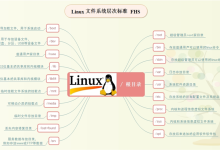1、setfacl的用途
setfacl命令可以用来细分linux下的文件权限。
chmod命令可以把文件权限分为u,g,o三个组,而setfacl可以对每一个文件或目录设置更精确的文件权限。
换句话说,setfacl可以更精确的控制权限的分配。
比如:让某一个用户对某一个文件具有某种权限。
这种独立于传统的u,g,o的rwx权限之外的具体权限设置叫ACL(Access Control List)
ACL可以针对单一用户、单一文件或目录来进行r,w,x的权限控制,对于需要特殊权限的使用状况有一定帮助。
如,某一个文件,不让单一的某个用户访问。
2、setfacl的用法
用法: setfacl [-bkndRLP] { -m|-M|-x|-X … } file …
-m, –modify-acl 更改文件的访问控制列表
-M, –modify-file=file 从文件读取访问控制列表条目更改
-x, –remove=acl 根据文件中访问控制列表移除条目
-X, –remove-file=file 从文件读取访问控制列表条目并删除
-b, –remove-all 删除所有扩展访问控制列表条目
-k, –remove-default 移除默认访问控制列表
–set=acl 设定替换当前的文件访问控制列表
–set-file=file 从文件中读取访问控制列表条目设定
–mask 重新计算有效权限掩码
-n, –no-mask 不重新计算有效权限掩码
-d, –default 应用到默认访问控制列表的操作
-R, –recursive 递归操作子目录
-L, –logical 依照系统逻辑,跟随符号链接
-P, –physical 依照自然逻辑,不跟随符号链接
–restore=file 恢复访问控制列表,和“getfacl -R”作用相反
–test 测试模式,并不真正修改访问控制列表属性
-v, –version 显示版本并退出
-h, –help 显示本帮助信息
3、几个例子
查看一个test文件的acl
#查看acl
[root@localhost ~]# getfacl test # file: test # owner: root # group: root user::r-x user:tank:rwx #effective:--- group::r-x #effective:--- mask::--- other::---
修改之后再查看:
[root@localhost ~]# setfacl -m u:zhangy:rw- test #修改文件的acl权限,添加一个用户权限 [root@localhost ~]# getfacl test # file: test # owner: root # group: root user::r-x user:zhangy:rw- #多出来一个用户 user:tank:rwx group::r-x mask::rwx other::--- [root@localhost ~]# setfacl -m g:zhangying:r-w test #添加一个组 [root@localhost ~]# getfacl test # file: test # owner: root # group: root user::r-x user:zhangy:rw- user:tank:rwx group::r-x group:zhangying:rw- mask::rwx other::---
再看一个例子:
[root@localhost ~]# getfacl test #查看acl # file: test # owner: root # group: root user::rw- group::r-- other::r--
[root@localhost ~]# setfacl -m u:tank:rx test #给tank用户向test文件增加读和执行的acl规则 [root@localhost ~]# getfacl test #查看acl # file: test # owner: root # group: root user::rw- user:tank:r-x #已加入 group::r-- mask::r-x other::r-- [root@localhost ~]# setfacl -m u::rwx test #设置默认用户,读,写,可执行 [root@localhost ~]# getfacl test # file: test # owner: root # group: root user::rwx user:tank:r-x group::r-- mask::r-x other::r-- [root@localhost ~]# setfacl -b test #清除所有acl [root@localhost ~]# getfacl test # file: test # owner: root # group: root user::rwx group::r-- other::r-- [root@localhost ~]# setfacl -m u:tank:rx test #给tank用户向test文件增加读和执行的acl规则 [root@localhost ~]# setfacl -m u:testtank:rx test #给testtank用户向test文件增加读和执行的acl规则 [root@localhost ~]# getfacl test # file: test # owner: root # group: root user::rwx user:testtank:r-x user:tank:r-x group::r-- mask::r-x other::r-- [root@localhost ~]# setfacl -x u:tank test #清除tank用户,对test文件acl规则 [root@localhost ~]# getfacl test # file: test # owner: root # group: root user::rwx user:testtank:r-x group::r-- mask::r-x other::r--
设置组的话只需要把setfacl -m u::rwx 中的u改为g即可,大致差不多。
设置mask的话,setfacl -m u::rwx 中的u改为m,并且这个可不针对用户和组哦,其他的大致差不多。
在使用-R时,记得放在-m前面,否则不可以地
使用-d的话,就会把默认的都加上去,针对目录哦。
 琼杰笔记
琼杰笔记







评论前必须登录!
注册